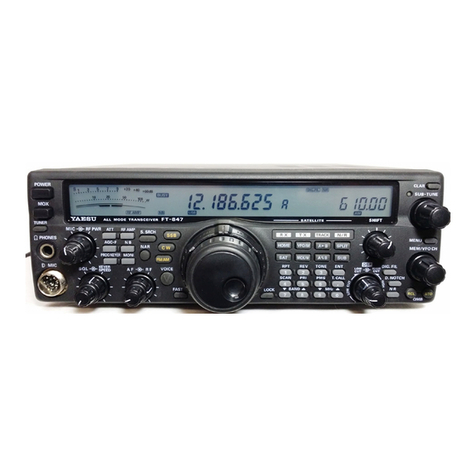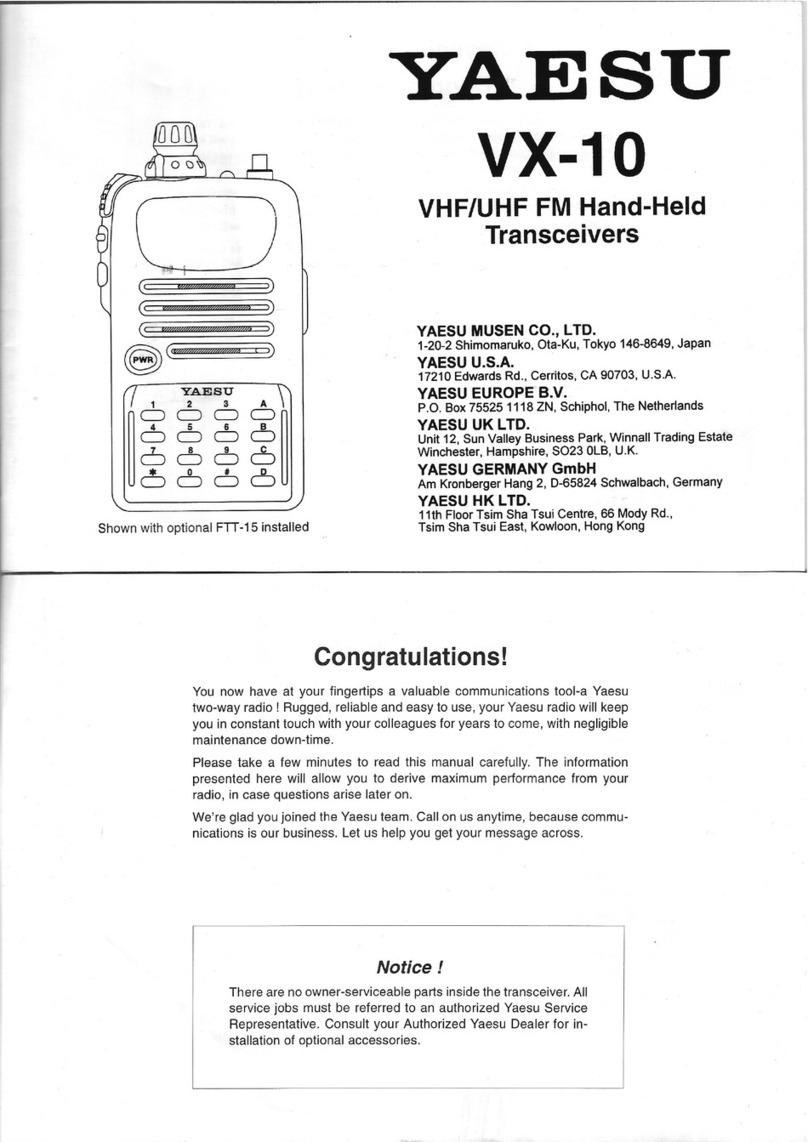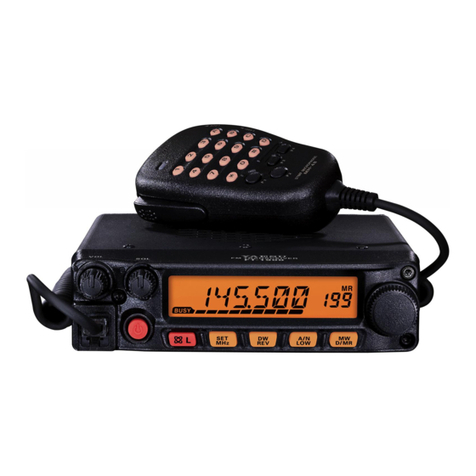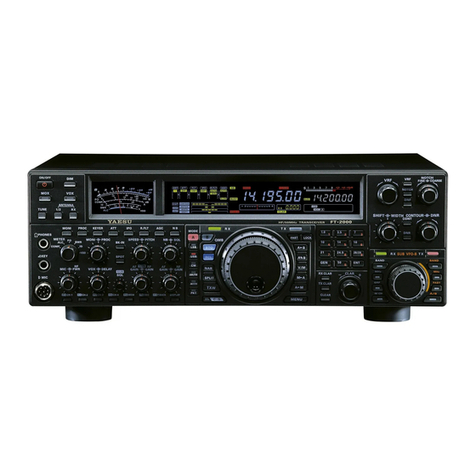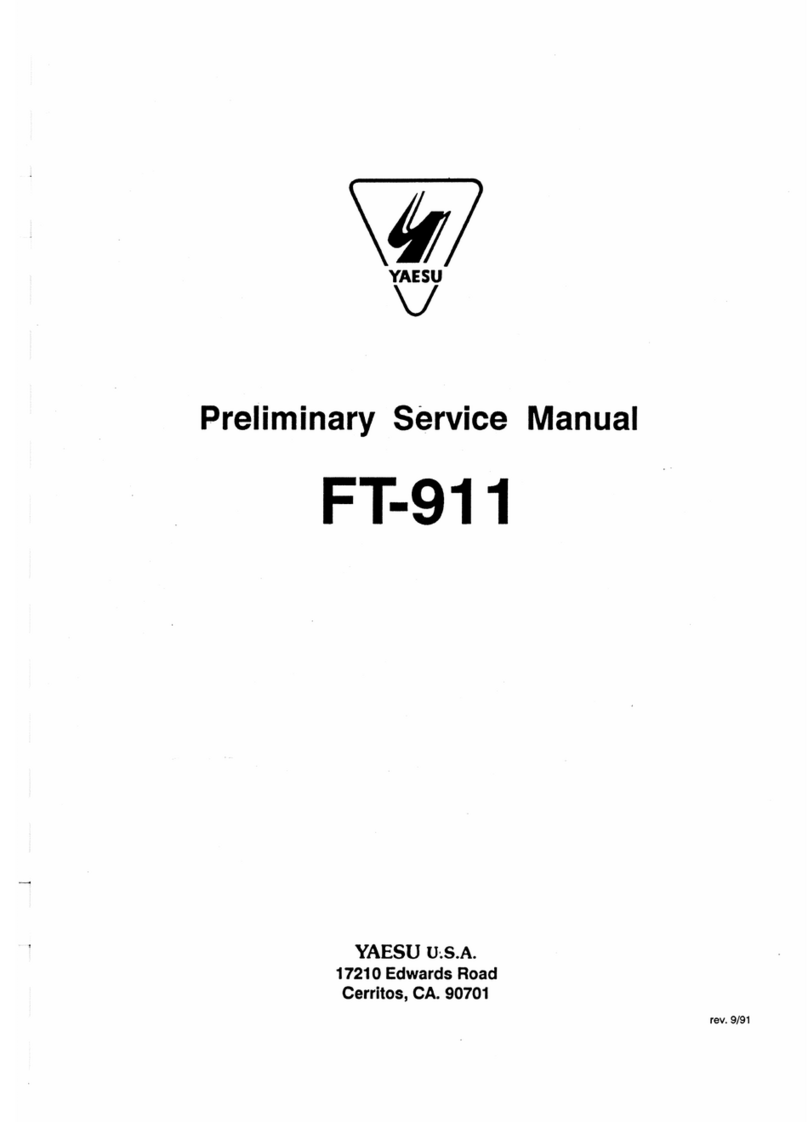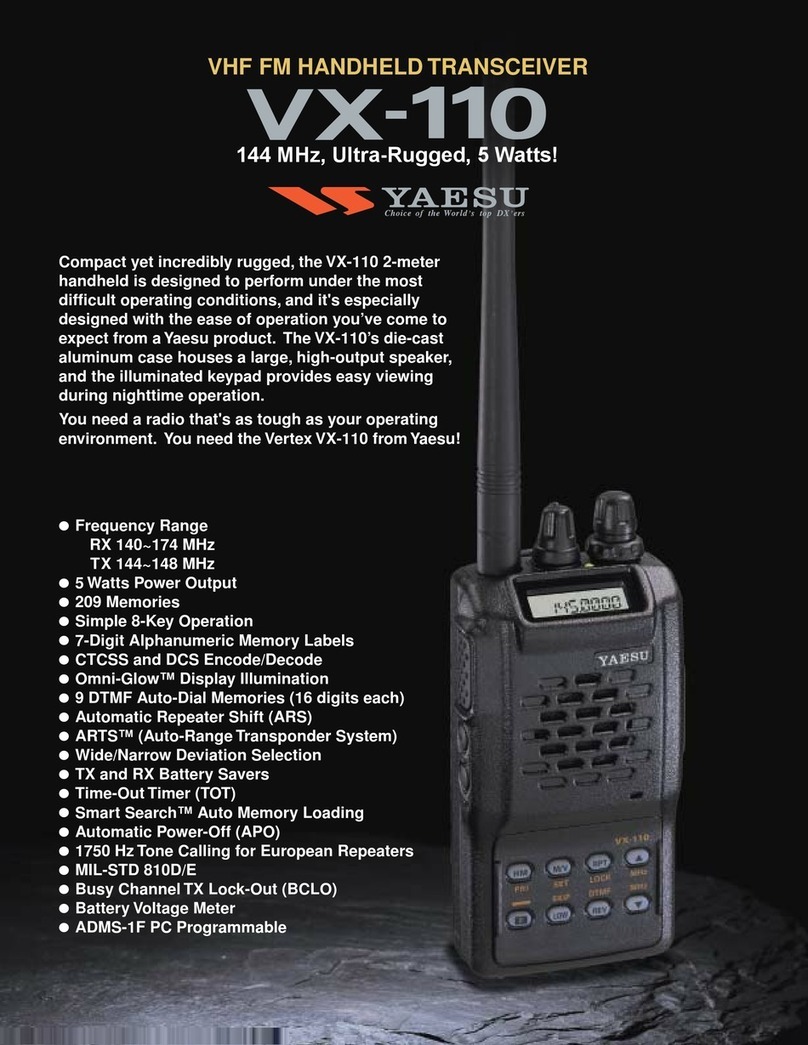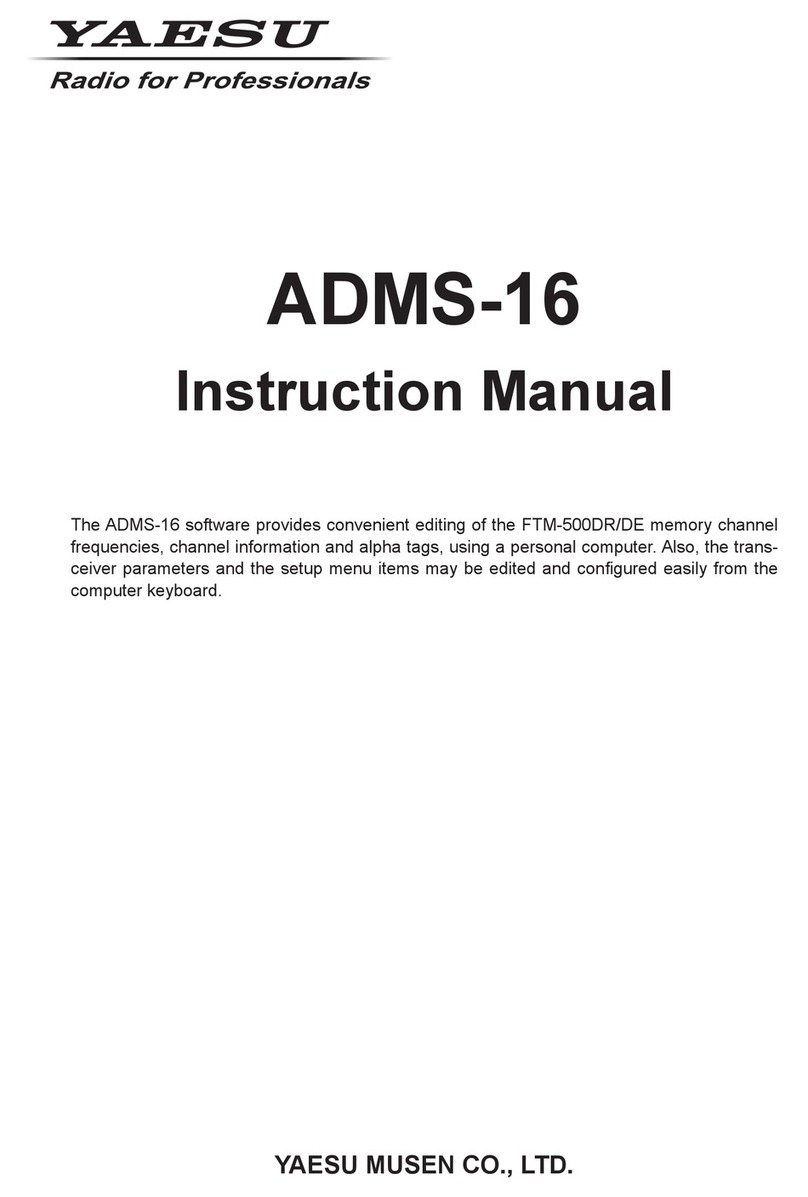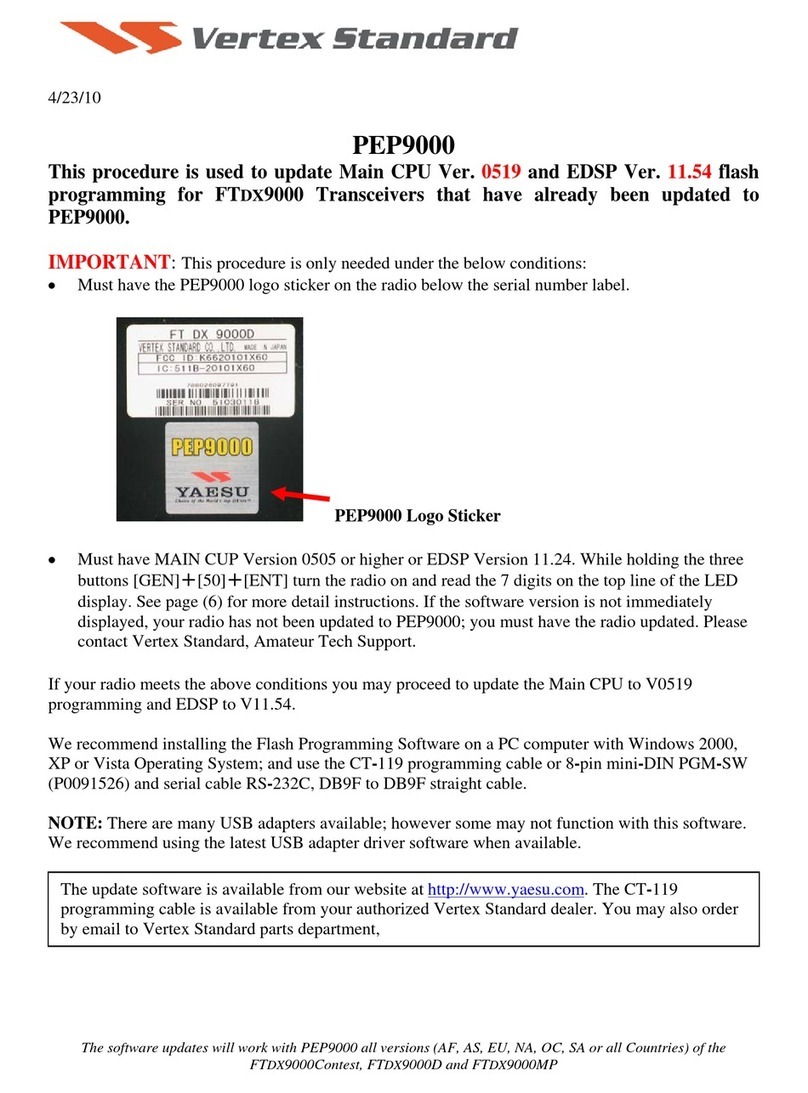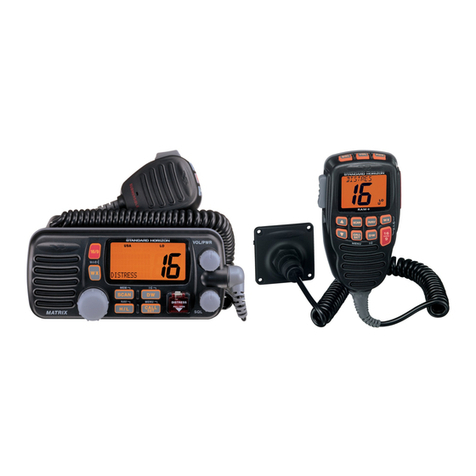
Introduction .......................................... 1
Controls & Connectors ........................ 2
Accessories & Options .......................... 3
Basic Operation .................................... 4
Battery Pack Installation and Removal ...... 4
Battery Charging ......................................... 4
Antenna Installation .................................... 5
Switching Power ON and OFF ................... 6
Adjusting the Volume Level ....................... 6
Squelch Setup ............................................. 6
Transmitting ................................................ 6
Frequency Navigation ................................. 7
Changing the Transmitter Power Level ...... 7
Changing the Channel Steps ....................... 7
Repeater Operation ..................................... 8
Automatic Repeater Shift (ARS) ............ 8
Manual Repeater Shift Activation .......... 8
Setting Repeater Tx Offset ..................... 9
Checking the Repeater
Uplink (Input) Frequency ... 9
Keyboard Locking ...................................... 9
Advanced Operation .......................... 10
VFO Split Mode ....................................... 10
Receive Battery Saver Setup .................... 10
Tx Battery Saver ....................................... 11
Keypad/LCD Illumination ........................ 11
Automatic Power-Off (APO) Feature ....... 12
Checking the Battery Voltage ................... 12
Disabling the BUSY/TX LED .................. 12
Busy Channel Lock-Out (BCLO) ............. 12
Disabling the Key pad Beeper .................. 13
Programming the Key Functions .............. 13
Transmitter Time-Out Timer (TOT) ......... 13
Tone Calling (1750 Hz) ............................ 14
ANI Operation (Automatic
Number Identification) ... 14
CTCSS Operation ..................................... 15
DCS Operation ......................................... 16
Tone Search Scanning .............................. 17
To scan for the tone in use .................... 17
CTCSS/DCS Bell Operation .................... 17
Contents
Memory Operation ............................. 18
Memory Storage ....................................... 18
Storing Independent Trasmit
Frequencies (“Odd Splits”) .... 18
Memory Recall ......................................... 18
Memory Offset Tuning ............................. 19
HOME Channel Memory ......................... 19
Labeling Memories ................................... 19
Masking Memories ................................... 20
Memory Only Mode ................................. 20
Scanning .............................................. 21
Setting the Scan Resume Technique ..... 21
To set the Scan-Resume mode .............. 21
VFO Scanning .......................................... 21
Memory Scanning ..................................... 22
How to Skip (Omit) a Channel
During Memory Scan Operatin ... 22
Programmable (Band Limit)
Memory Scan (PMS) .... 22
Automatic Lamp Illumination
on Scan Stop .... 23
Band Edge Beeper .................................... 23
Smart Search Operation ............................ 23
Setting the Smart Search Mode ............ 24
Storing Smart Search Memories ........... 24
Priority Channel Scanning
(Dual Watch) .... 24
DTMF Operation ................................ 26
Manual DTMF Tone Generation .............. 26
DTMF Autodialer ..................................... 26
To send the telephone number .............. 26
ARTS Operation ................................. 27
Basic ARTS Setup and Operation ............ 27
ARTS Polling Time Options .................... 28
ARTS Alert Beep Options ........................ 28
CW Identifier Setup .................................. 28
To activate the CW identifier ................ 29
Interface of Packet TNCs ................... 30
Reset ..................................................... 30
Cloning................................................. 31
Set Mode .............................................. 32
Specifications ...................................... 39

